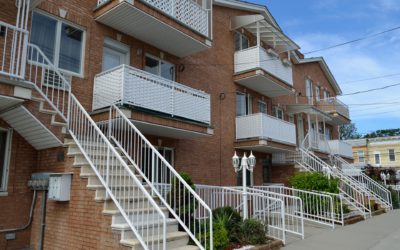Since the majority of Americans view their pets as members of their family, Best Friends Animal Society receives hundreds of inquiries about pet-friendly housing each year. Given the huge demand, one might think there would be plenty of pet-friendly housing options for renters. However, a 2005 study about pet-friendly housing across the United States indicates something quite different. Only about 9 percent of landlords have no restrictions on the type of pets tenants may own.
A further look at the study’s statistics shows that landlords might be hurting themselves because when they offer pet-friendly rentals, their bottom-line profits increase.
A 2011 analysis of the condominium market in the Journal of Real Estate Finance and Economics found that pet-friendly landlords who place no restrictions on pet ownership currently enjoy an 11.6 percent rental premium over landlords who do not allow pets (after controlling for waterfront rentals, vacancies, age, bedrooms, and other factors).
In addition to increased profits, the study showed a variety of reasons why landlords should not restrict dog or cat ownership. Despite the more expensive rent, tenants with pets were found to stay significantly longer—by an average of 23 to 46 months—than tenants without pets. The vacancy rate for pet-friendly housing and the amount of money landlords had to spend on advertising was also significantly lower than “no pets allowed” rentals. Additionally, landlords spent less than half the usual amount of time marketing pet-friendly housing and received twice as many applicants for a vacant unit, allowing them to pick the cream of the crop in tenants.
So why are the majority of landlords and property management companies missing out on this no-brainer to increased profitability? It might be due to a number of factors. Below we’ll dispel some of the myths about having tenants with pets.
Liability
Risk-aversion is a safe route to take when you own a property. Of course, you want to make sure your investment is protected, but often the risks are greatly exaggerated in the news due to things like the recent Maryland case in which the Maryland Court of Appeals held the owner and the landlord strictly liable for a bite from a pit bull terrier that lived in the building. However, this case is an anomaly since Maryland has no strict liability statute making dog owners responsible for their pets.
In contrast, many states have a good strict liability statute which makes all dog owners, not landlords, liable for dogs. Luckily for Maryland landlords, legislators have vowed to overturn the ill-conceived, judicial activist decision next session.
Size and appearance
Some landlords choose to allow only small dogs, thinking that they are less likely to be aggressive. However, size doesn’t matter. According to the American Veterinary Medical Association (AVMA), breeds that were more aggressive toward people were small to medium-sized dogs, such as toy breeds and spaniels.
A dog’s appearance also is irrelevant. There’s a strong breed stigma against pit-bull-type dogs, but controlled studies have not identified this breed group as disproportionately dangerous. (See the AVMA publication “Welfare Implications of the Role of Breed in Dog Bite Risk and Prevention,” April 17, 2012.)
Some companies—such as Stonesfair Properties, which has rental units in Arizona, Montana and California—welcome all responsible dog owners and do not place any restrictions on size or breed. In 2011 Karisa Simmons, a Stonesfair Properties assistant manager, said “Not allowing pit bulls or other ‘restricted breeds’ is purely discriminatory and does not reflect any real reasoning. More damage to apartments, bite incidents and noise complaints come to us through the breeds that most landlords welcome with open arms.”
In addition, many dogs are mistakenly identified as “pit bulls” when they are not. DNA testing shows that it is extremely hard to visually identify the heritage of a mixed-breed dog. So while a mutt may look like a “pit bull” (which, by the way, isn’t one specific breed), the dog might really be a Labrador retriever or a whippet. The bottom line is that consideration of a dog’s behavior, not his size or breed, makes the most sense when applying rental restrictions. Your tenants and their beloved pets will appreciate it.
Problems and solutions
While some issues do arise for landlords when offering pet-friendly rental housing, there are solutions and the economic benefits of renting to people with pets usually outweigh any problems. Here are a few of the common concerns landlords have regarding pets—and some solutions.
Problem: Damage.
Solution: Have tenants pay a pet deposit.
Problem: Noise.
Solution: Use the strategies for resolving noise issues involving children or stereos.
Problem: Insurance coverage.
Solution: Many insurance companies, including Farmers Insurance and State Farm, do not discriminate against dogs because of their breed.
Landlords who rent to pet owners for the first time might consider requiring the following:
· Pet sterilization (studies show that the majority of bite cases involve unsterilized dogs)
· Obedience training certificates
· Health or rabies vaccination certificates
· Pet references
Becoming Pet-friendly: The Right Thing To Do
A 1998 study found that 29% of pet relinquishments to animal shelters were for housing issues, primarily having to move. And the most common specific reason given for relinquishment was “landlord refused to allow pets.” Tragically, this percentage has probably increased with the foreclosure crisis.
Every day, more than 9,000 pets are unnecessarily killed in America’s shelters, simply because they don’t have a home. Each one of these pets is an individual; each one is a valued life worth saving. That number should be zero—and it can be if landlords and property management companies do their part to make more pet-friendly housing available.
Originally published on Groundwork






0 Comments